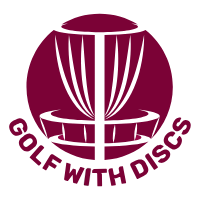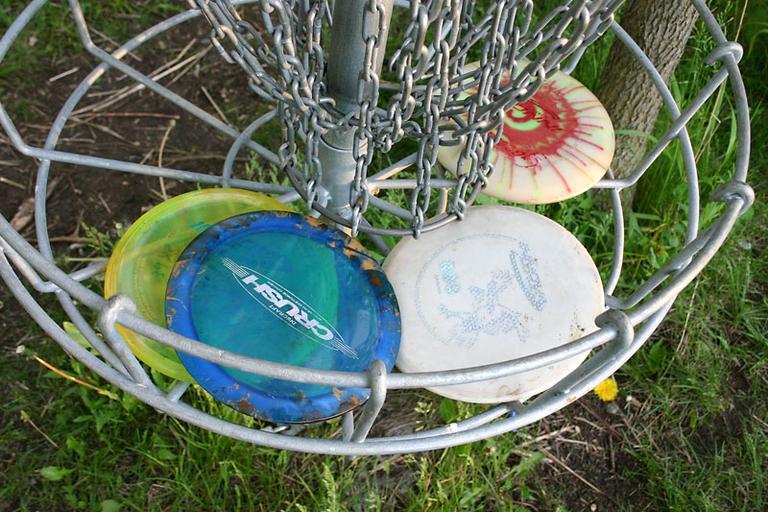Frustrated with wobbly throws and putts that seem magnetically drawn to the ground? You’re not alone. Most players eventually crash into a plateau that feels like concrete. The problem is not lack of effort but lack of structure. Random throws at the park rarely translate into lower scores. That’s the agitation. The solution is simple: consistent disc golf practice drills that turn casual hurling into focused training. This guide gives you the drills that actually work, from adding yards to your drives to hitting putts with the regularity of a metronome.
Every sport has a scam we play on ourselves. In disc golf it’s the comforting lie that volume equals progress. It doesn’t. You wouldn’t practice darts by walking past the board at speed and calling that cardio. The fix is almost boring in its reliability: small drills, clear targets, honest notes. Treat practice like a lab, not a lottery. Do that for two weeks and your card mates will swear you bought a new arm.
There’s no single “fastest” way, but consistency and focus are key. Here’s a two-pronged approach:
Master form first. Run drills that target grip, footwork, and body rotation. Think of it like tuning a violin before trying to play a concerto.
Target one skill at a time. Today is 20 minutes of putting ladders, tomorrow is release-point work. Single focus beats scattergun effort.
This guide gives you the drills that work for beginners and veterans, without padding or filler. Whether you’re yearning to crush longer drives, sink more putts, or master advanced shot shapes, these drills will equip you with the tools to elevate your game.
But before we dive into the nitty-gritty, let me share a personal anecdote. I vividly remember my early disc golf days. My throws wobbled more than a gummy worm, and putting accuracy was a distant dream. Frustrated, I almost hung up my discs. Thankfully, a seasoned player at the course introduced me to a few fundamental drills. Within weeks, I noticed a significant improvement in my technique and consistency. This experience fueled my passion for the sport and ignited my desire to share this knowledge with others.
Let’s get practical.
Building a Disc Golf Practice Routine That Works
A structured routine turns time into progress. Use it to stop wasting throws and start measuring gains.
- Target one skill: backhand release angle, 15-25-35 foot putts, or a new disc class. Aimless throws teach aimless habits.
- Field work is your lab. Mark targets, repeat reps, log results. If it’s not measured, it’s a hunch.
- Test discs with purpose. Throw the same line with three molds, note the differences, pick the one that forgives your bad habit most.
Not necessarily. While it’s beneficial to have a go-to driver and putter for practicing form, experiment with different discs during your drills. This helps you understand how various disc types fly and react, allowing you to make informed decisions when selecting discs for specific situations on the course.
Aim for 2–3 focused sessions a week. Short, repeatable, logged. Ten tight minutes beats an hour of wandering.
Disc Golf Practice Drills for Distance and Accuracy
Beginners chase power with arm speed. Distance comes from sequence. These drills teach timing first, speed second.
Disc Golf Drills for Beginners:
- Focus on Form: Mastering proper throwing form is crucial for maximizing power and distance. Pay close attention to your grip, footwork, and body rotation. Study slow-motion form breakdowns from reliable coaches. Then copy one cue at a time. One change per session, not five.
- Gradual Improvement: Start with shorter throws and gradually increase arm speed and follow-through as your technique solidifies.
- Grip Experimentation: Explore different grip techniques (power grip, fan grip) to discover what feels most comfortable and generates the most power for you.
- Strength and Flexibility: Get stronger where it counts. Hips, glutes, core. Ten minutes of mobility saves weeks of lay-offs.
Beginners often focus on brute strength initially, which can hinder progress. Here are some tips for beginners to gain more distance:
Focus on form first: Mastering proper throwing form allows you to transfer power efficiently. This translates to more distance with less wasted effort.
Gradual improvement: Start with comfortable throwing distances and gradually increase arm speed and follow-through as your technique solidifies.
Grip experimentation: Finding a comfortable and consistent grip that allows for optimal power transfer is crucial. Experiment with different grip techniques (power grip, fan grip) to see what works best for you.
Strength and flexibility: Building upper body strength and core stability over time will naturally enhance your throwing power and control. Consider incorporating beginner-friendly disc golf-specific workout plans into your fitness routine.
Disc Golf Accuracy Drills Every Player Should Try
Drills emphasizing repetition, stance control, and mental visualization can significantly enhance your aim and shot consistency.
Accuracy is the lifeblood of consistent scoring. Here’s how to refine your aim through practice:
- Repetition is Key: Reps make release points boring, and boring is good. Hit 30 throws at one line, record the misses, adjust the foot angle, repeat.
- Stance and Balance: Maintaining a balanced and stable stance is vital for controlled throws. Experiment with different stances to find what feels most comfortable and allows you to maintain control throughout the throw.
- Mental Visualization: Run a three-step mental script. Pick a line, see the apex, commit to one cue. Anything more is noise.
How Disc Golf Practice Drills Build Technique and Power
Absolutely! Drills focusing on proper form, gradual power increase, and grip exploration can significantly improve your throwing distance.
Want more distance without wrenching your shoulder? Build power with timing, rhythm, and a cleaner kinetic chain. Your legs start the story, your hips write the middle, your arm signs at the end.
Developing Power and Control in Disc Golf Throws
Unleashing maximum distance requires harnessing the power of your entire body. Here’s how:
- Kinetic Chain: Imagine your body as a kinetic chain, transferring power from your legs through your core and ultimately to your throwing arm. Engage your entire body for maximum power transfer.
- Timing and Synchronization: Focus on synchronizing your body movements. The timing of your footwork, hip rotation, and arm swing all play a crucial role in generating power.
- Plyometrics and Core Strengthening: Add light plyos and core work. Bound, rotate, stabilize. Short sets, clean reps, stop when form slips.
Disc Golf Putting Drills That Actually Improve Accuracy
Sinking more putts translates to lower scores. Here’s how to refine your putting technique:
Effective Disc Golf Putting Drills for Skill Enhancement
Putting rewards boring habits. Same stance, same pace, same link on the chains.
- The Putting Ladder:
- Set up a series of cones or markers at varying distances from the basket (start close and gradually increase distance).
- Aim to make a certain number of putts consecutively from each distance (e.g., 5 putts from 10 feet, 4 putts from 15 feet).
- This drill builds confidence and hones your putting accuracy under pressure.
- The Circle Drill:
- Place a marker approximately 15-20 feet from the basket.
- Start by putting from this marker and then walk a designated distance (e.g., 10 paces) in a circle around the basket after each putt, making your next putt from a slightly different angle.
- This drill simulates putting from various locations around the basket you might encounter on the course.
- Partner Challenge: loser buys coffee. Stakes focus the mind better than pep talks.
- Grab a friend and some friendly competition!
- Take turns putting from various distances, keeping track of successful putts.
- The player with the most successful putts wins!
- This adds a fun element to practice while still focusing on accuracy and consistency.
Setting Goals and Structure for Disc Golf Putting Practice
Having a structured practice routine with clear goals is essential for long-term improvement. Here’s how to approach it:
- Short-Term & Long-Term Goals: Set short-term goals (e.g., increase putting percentage from within 15 feet by 10% in a month) and long-term goals (e.g., become a consistent birdie putter) to stay motivated and track progress.
- Dedicated Putting Time: Allocate a specific amount of time in your practice session solely for putting drills and repetition.
- Analyze and Refine: Regularly assess your putting performance and adjust your practice regimen accordingly. Are you missing short putts? Focus on drills that improve focus and distance control. Struggling with long putts? Practice putting from further distances.
Structure your putting practice for focus and repetition:
Warm-up: Start with a few minutes of light putting to warm up your muscles and get a feel for the discs.
Targeted drills: Dedicate time to specific drills that address your putting weaknesses. The “Putting Ladder” drill is a great option – set up markers at varying distances from the basket and aim to make a certain number of putts consecutively from each distance.
Focus on consistency: Make the stroke repeatable. Same breath, same tempo, same finish. Tidy beats flashy.
Mental visualization: Visualize successful putts before each attempt. Imagine the flight path of the disc and see yourself executing a perfect putt.
We will now delve deeper into specific drills to address various aspects of your disc golf game. Here are some additional techniques you can incorporate into your practice routine:
Disc Golf Putting Technique Drills
- Refining Your Putting Stance: Experiment with different putting stances (straddle putt, staggered stance) to find one that provides optimal balance and feel.
- Enhancing Putting Grip: Explore various putting grips (fan grip, two-finger grip) to discover what offers the most control and consistency for you.
Improve Your Disc Golf Approach Shots
- Developing Approach Shot Strategies:
- Build a three-shot toolkit for approaches: straight neutral, soft hyzer, gentle turn. If those three won’t solve it, you picked the wrong landing zone.
- Fine-tuning Approach Shot Release: Practice controlling the speed and angle of your release point to achieve desired flight paths for your approach shots.
Disc Golf Hyzer Throw Drills
Hyzer throws are invaluable for navigating obstacles and achieving a controlled fade at the end of the flight path. Here’s how to master them:
- Understanding Hyzer Angle: The hyzer angle refers to the disc tilting slightly on its axis towards the throwing hand at release. This angle creates a stable flight path with a predictable fade to the left (for right-handed throwers) at the end of the throw.
- Hyzer Release Drills:
- Hyzer Line Drill: Set up two markers a comfortable distance apart, creating a straight line. Focus on releasing the disc with a hyzer angle, ensuring it starts slightly to the right of the target line and fades back to hit the markers.
- Hyzer Flip Drill: throw at 70 percent power with a slight hyzer. Note the point it stands up. Shift that release by two degrees next rep. Log it.
Perfecting Disc Golf Anhyzer Throws
Anhyzer throws, also known as turnover throws, offer a different flight path compared to hyzers. Here’s how to execute them effectively:
- Exploring Anhyzer Shot Mechanics: Anhyzer throws involve tilting the disc slightly away from the throwing hand at release. This creates a flight path that curves right (for right-handed throwers) throughout the throw. Anhyzer shots are useful for navigating tight fairways or inducing rollers.
- Anhyzer Release Practice:
- Anhyzer Line Drill: Similar to the hyzer line drill, set up markers creating a straight line. Focus on releasing the disc with an anhyzer angle, ensuring it starts slightly to the left of the target line and curves back to hit the markers.
- Anhyzer Recognition: throw the same line with an understable, neutral, and overstable disc. Note the hold time before fight-out. Pick the disc that forgives your late release.
Fine-tuning Disc Golf Roller Throws
Roller throws involve throwing the disc with a low trajectory so it skims along the ground and potentially rolls a significant distance. Mastering rollers can be advantageous on certain courses.
- Mechanics of Roller Shots: Roller shots require a low release point and a nose-down disc angle. Experiment with different disc types; understable discs with a blunt nose tend to roll better.
- Roller Shot Practice Drills:
- Controlled Roller: aim at a chalk line. Record entry angle and roll length. If you can’t measure it, you can’t repeat it.
- Slope Roller Drill: Find a gentle slope and practice throwing rollers down the slope. This helps you understand how inclines can affect the rolling distance and direction.
Enhancing Disc Golf Sidearm Throws
The sidearm throw, also known as a flick throw, offers an alternative throwing motion to the backhand throw. Here’s how to incorporate it into your arsenal:
- Perfecting Sidearm Technique: Sidearm Technique that doesn’t shred your elbow: short reach-back, firm wrist, plant closed, finish balanced. Focus on maintaining proper form and generating power through your core and legs. Online resources like the Dynamic Discs YouTube Channel offers excellent sidearm throw tutorials.
- Sidearm Release Practice:
- Sidearm Line Drill: Similar to the hyzer and anhyzer line drills, set up markers to create a straight line. Practice throwing sidearm with a focus on achieving a straight flight path and hitting the markers.
- Disc Exploration Drill: Experiment with throwing different discs sidearm. Understable discs tend to be more forgiving for sidearm throws, while overstable discs can be more challenging to control.
Improving Disc Golf Tomahawk Throws
The tomahawk throw, also known as a thumber throw, involves gripping the disc behind the rim and throwing with a vertical disc orientation. Tomahawk throws can be useful for situations requiring a unique flight path or overcoming obstacles.
- Tomahawk Shot Fundamentals: Gripping the disc behind the rim and releasing with a vertical orientation creates a tumbling or rolling flight path. Tomahawk for get-out-of-jail: set a ceiling, throw to a landmark, accept the skip. This is a tool, not a lifestyle.
- Tomahawk Shot Training:
- Tomahawk Target Drill: Set up a target at a close-to-medium distance. Practice throwing tomahawks with the goal of landing the disc near the target. Focus on achieving a consistent release point for improved accuracy.
- Tomahawk Variation Drill: Once comfortable with basic tomahawks, experiment with different throwing angles. Try throwing tomahawks with a hyzer or anhyzer angle to observe how they affect the flight path.
Developing Disc Golf Forehand Throws
While the backhand throw is the most common throwing style, the forehand throw offers another option. Here’s how to incorporate it into your game:
- Forehand Throw Mechanics: Forehand Throw Mechanics in one cue: lead with the hip, not the hand.
- Forehand Throw Practice Tips:
- Forehand Line Drill: Similar to other line drills, set up markers to create a straight line. Practice throwing forehands with a focus on achieving a straight flight path and hitting the markers.
- Disc Selection Drill: Experiment with throwing different discs forehand. Overstable discs tend to be more controllable for forehand throws, while understable discs might be more difficult to manage.
Perfecting Disc Golf Overhand Throws
The overhand throw, also known as a hammer throw, involves gripping the disc on the rim and throwing with an overhand motion. Overhands are less common but can be useful for specific situations.
- Overhand Shot Execution: Grip the disc on the rim and throw with an overhand motion similar to throwing a shot put. Overhands offer a low trajectory flight path and can be helpful for scrambling situations or overcoming obstacles close to the basket. Overhand for low ceilings: think spear, not shovel. Point, pop, let it tumble.
- Overhand Shot Training Exercises:
- Overhand Accuracy Drill: Set up a target at a close-to-medium distance. Practice throwing overhands with the goal of landing the disc near the target. Focus on a smooth release point for improved accuracy.
- Overhand Distance Drill: Once comfortable with overhand accuracy, practice throwing them from increasing distances to gauge their effectiveness in different situations.
Advanced Disc Golf Shot Shaping Techniques
Mastering a variety of throws is only half the battle. Learning how to shape your shots allows you to navigate complex courses and achieve strategic flight paths. Here are some key concepts to explore:
- Exploring Shot Shaping Concepts:
- Flex shots involve throwing a disc with a slight hyzer angle that flips up into a turnover during flight, allowing you to bend around obstacles.
- Turnover shots involve throwing a disc with an anhyzer angle that holds the turn throughout the flight path, useful for navigating tight fairways or inducing rollers.
- Skip shots involve throwing a disc with a low trajectory and a glancing blow off the ground, causing it to skip forward and potentially gain additional distance.
- Shot Shaping Lab: set three cones as gates. Thread them with flex, turnover, and skip. Film from behind, fix the miss you see twice. For example, set up obstacles on the course and practice throwing flex shots around them. The more you experiment and practice, the more comfortable you’ll become with shaping your shots for strategic advantages.
Why Disc Golf Practice Drills Beat Endless Casual Rounds
There’s a strange paradox in disc golf: the more casually you play, the less you improve. Three casual rounds teach you to be casually average. Drills teach you to be predictably good. Think of it like rehearsing a bad golf swing or practicing piano scales with the wrong finger positions. Repetition without correction just cements the flaws.
This is where behavioral psychology comes in. Players often fall into what economists call the sunk cost fallacy. You’ve already invested time in a habit, so you keep at it, even if it produces little return. Playing casual rounds without drills is the disc golf equivalent of binge-watching fitness videos instead of actually exercising. Casual play is cosplay training. It looks like practice, it behaves like entertainment.
Drills, on the other hand, create measurable wins. By isolating variables—form, grip, release point—you get fast feedback and can adjust. It’s no different from how musicians practice scales or athletes run sprints. You wouldn’t expect to get fitter by wandering around a gym at random, so why expect disc golf to be different?
There’s also the hedonic treadmill problem. Casual play gives you dopamine spikes—hitting a lucky putt, threading a wooded fairway—but those highs fade. Structured drills might feel repetitive in the moment, but they generate compounding returns. When you do hit that clutch putt in competition, the joy is magnified precisely because it’s the result of deliberate effort.
Finally, the IKEA effect explains why drills make practice more satisfying. Just as people value furniture they’ve assembled themselves more than identical pre-made pieces, disc golfers value improvement more when they’ve “built” it through structured repetition. A made putt feels good, but a made putt that comes from months of ladder drills feels profoundly yours.
So, if you’ve been wondering why your scores haven’t budged despite endless rounds, it’s not a talent issue. It’s a practice structure issue. Replace a few casual games with dedicated practice sessions, and you’ll notice the difference not in weeks, but in throws.






